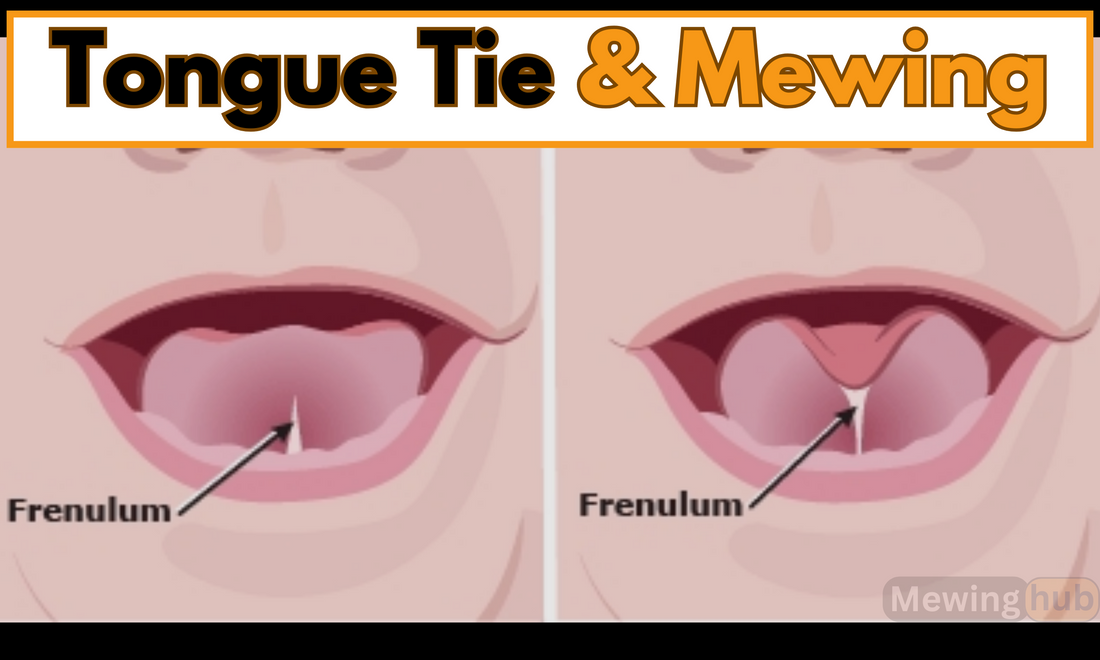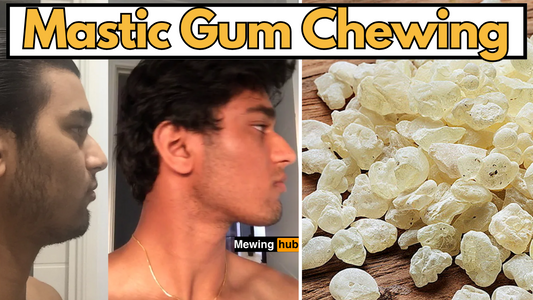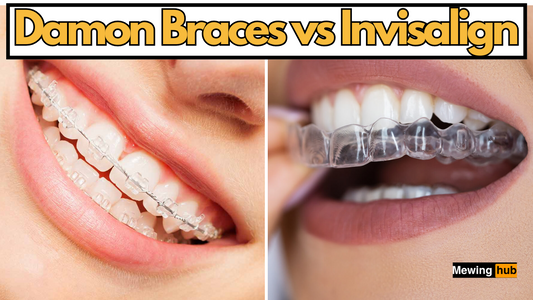Navigating Mewing with a Tongue Tie: Strategies and Solution

Share
Understanding the Impact of a Tongue Tie

A tongue tie can limit the tongue's ability to reach the optimal mewing position on the palate. It's important to recognize how this condition might affect your mewing practice and to adjust your approach accordingly.
The tongue tie prevents you from correctly engaging the back third of the tongue on the palate. According to Dr. Mike Mew, the back third of the tongue is crucial for effective mewing. Not engaging this area can prevent you from achieving optimal results.
Adaptive Mewing Techniques

Adapting your mewing technique is essential when dealing with a tongue tie:
-
Gradual Elevation: Start by focusing on elevating the tongue in stages. Begin with the area just behind the teeth and gradually move further back as your mobility increases. This incremental approach can help you adjust to the limitations imposed by a tongue tie.
-
Passive Healing Posture: When active mewing is difficult, maintain a passive tongue posture. Keep your mouth closed and allow your tongue to lie flat as much as possible. This can help maintain some degree of proper oral posture even when full mewing is not possible.
Targeted Exercises for Enhanced Tongue Mobility
Improving the mobility and strength of your tongue, even with a tongue tie, is crucial. Engage in targeted exercises designed to enhance tongue flexibility:
-
Stretching the Frenulum: Gently stretch the frenulum, the tissue connecting the tongue to the floor of the mouth, to increase its elasticity. This can gradually improve the range of motion.
-
Tongue Circuits: Move your tongue in a circular motion within the limits of comfort. This exercise helps enhance tongue flexibility and strength over time.
Tracking Progress and Ensuring Change
Keep track of your progress with regular photo documentation and be patient with the changes. Adjust your expectations based on feedback from your body and professional guidance.
Mewing with a tongue tie is a journey that requires patience, discipline, and consistency. Celebrate incremental improvements and stay committed to the practice.
Addressing Tongue Tie: Surgical and Non-Surgical Solutions

For those experiencing significant discomfort or disruptions due to a tongue tie, several treatment paths are available:
-
Frenuloplasty: This comprehensive procedure aims at releasing the tongue tie, suitable for more complex cases.
-
Frenotomy: A relatively straightforward surgical approach, frenotomy involves cutting the frenulum to free the tongue's movement.
-
Non-Surgical Methods: Non-surgical methods, particularly exercises designed to enhance tongue mobility, offer a gentler alternative to surgery. These exercises can improve tongue movement and functionality over time.
Practical Tips for Mewing with a Tongue Tie

To effectively practice mewing with a tongue tie, consider these practical tips:
-
Daytime Consistency: Maintain a consistent mewing routine during the day to establish proper oral posture and prevent mouth breathing at night.
-
Focus on Lip Seal: Prioritize lip positioning before sleep, ensuring your lips remain sealed. This helps minimize the likelihood of nocturnal mouth breathing.
-
Lip Stretching and Strengthening: Engage in lip stretching exercises to combat sleep apnea concerns and improve overall tongue posture.
-
Mouth Tapes as a Tool: Use mouth tapes to discourage mouth breathing during sleep. Apply petroleum jelly to prevent skin irritation and place surgical tape over your closed mouth.
-
Optimal Sleeping Position: Sleep on your side to enhance tongue posture and prevent facial asymmetry caused by prolonged pressure on one side.
Conclusion: Achieving Optimal Mewing Results with a Tongue Tie
Mewing with a tongue tie presents unique challenges, but with the right adaptations and a commitment to practice, progress is possible.
By incorporating gradual elevation techniques, targeted exercises, and maintaining a consistent routine, you can still achieve positive changes in facial structure. For those experiencing significant limitations, surgical and non-surgical solutions can provide additional support.
Remember, patience and consistency are key to mastering mewing with a tongue tie and achieving the best possible outcomes.









